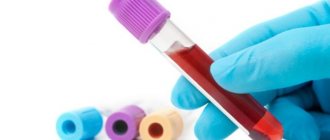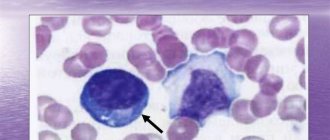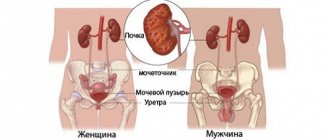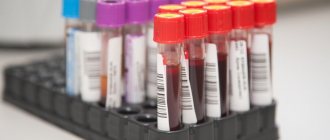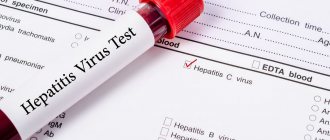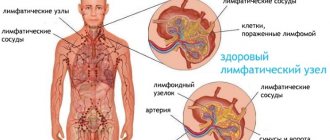The biggest problem with immune defenses functioning and malfunctioning is that both are invisible. Specific symptoms are characteristic only for the stage of its complete failure (rarely observed with HIV or bone marrow death). They do not affect the activity of other organs before the first infection. Therefore, even suspicions of a decrease in it or infection with the immunodeficiency virus are sufficient reason to test the immune system.
What is immune status
The medical term immune status was introduced to assess the state of a person’s immunity. Doctors say that immune status is a number of indicators by which one can objectively assess how a person’s defense system works in a given period of time. Nuances:
- To evaluate, a blood test is performed to determine the presence and quantity of immunoglobulins, protective proteins, and lymphocytes.
- As part of the procedure and subsequent analysis, it is revealed how active the protective components are in their function.
- In addition to blood, cells of the mucous membranes, skin, urine, and cerebrospinal fluid can be tested.
Classification of immunoglobulins
In the body, doctors distinguish 5 classes of immunoglobulins (Im), namely:
- ImG – antibodies of this class make up 65–80% of the total mass. They activate the complement system (a complex of enzymes involved in the body’s humoral defense), participate in and regulate the immune response (a complex multicomponent immune reaction launched by a foreign antigen, aimed at destroying danger), and enhance phagocytosis (the process of destruction of solid elements by phagocytes).
- ImM. Amount to 5–15%. They are the first to be synthesized in the newborn’s body, destroy invading viruses and bacteria, and trigger the complement system.
- ImA. 10–15% of the total. Contained in saliva, vagina, tears, lungs, bile. Their functions include protecting mucous membranes and neutralizing viral and bacterial toxins.
- ImE – 0.2%, activates an allergic reaction, protects against penetrating parasites.
- ImD - receptors for capturing antigens, make up 0.2%.
The immunogram evaluates the state of cellular and humoral immunity by the number of leukocytes and immunoglobulins. It also indicates how much the immune system is involved at the time blood samples are given. An immunogram indicates primary and secondary immunodeficiencies and helps in the diagnosis of infectious, autoimmune diseases, and hematological problems.
Primary immunodeficiency is a chronic disorder of the immune system. Characterized by damage to the components of immunity - cellular, humoral, complement system, phagocytosis.
Secondary immunodeficiency is a disorder of the immune system in children and adults that is not a consequence of birth defects.
A comprehensive analysis includes a number of studies:
- study of cellular, humoral immunity;
- assessment of the phagocytosis system;
- study of the complement system.
During pregnancy, an antibody test is required. If the Rh factors and the blood type of the parents are incompatible, the body attacks the embryo, perceiving it as a danger.
In addition, an immunogram examines the body for problems with the thyroid gland and identifies diseases such as diphtheria, herpes, chicken pox, rubella, cytoplasmosis (a disease caused by a fungus).
Why do you need an immunological blood test?
Assessing the immune status will help the doctor clarify the diagnosis, determine the severity of the disease and think through treatment tactics. The main tasks that immunity testing helps solve are:
- identification of specific antigens and antibodies in the biological environment, which can be used to determine the onset of oncology, pneumonia, hepatitis, influenza, HIV;
- identification of allergens in the event of allergic reactions;
- determination of immunological changes that identify autoimmune diseases and disorders of cellular immunity;
- diagnosis of primary and secondary immunodeficiency conditions;
- monitoring the effectiveness of immunosuppressive and cytotoxic therapy and its side effects;
- selection of adequate therapy to modulate immunity;
- control of the immune system during tissue or organ transplantation.
If abnormalities are found in the functioning of the immune system, the doctor prescribes immunotropic drugs. These include immunostimulants, immunomodulators or immunosuppressants. A treatment option is replacement treatment with the introduction into the body of:
- special serums;
- immunoglobulins to support the functioning of the system;
- additional mass of leukocytes;
- interferons that strengthen the body.
general information
Immunity is a special system in the body that protects it from the penetration of foreign bacteria, viruses and fungi, as well as preventing the development of malignant tumors and removing dead cells.
The health of the body is maintained thanks to the constant and coordinated work of individual parts of the immune system - blood cells, antibodies and other protective factors. Sometimes failures occur in this system, which can be short-term and reversible, for example, after infections and malnutrition, or serious, posing a danger to humans.
Only a specialist can figure out where exactly the breakdown occurred and select the appropriate treatment. Pathologies of the immune system are dealt with by doctors of all specialties, most often immunologists, hematologists and allergists.
When is a blood test for immunity prescribed?
Indications to donate blood for immune status are:
- disturbances in the functioning of the immune system;
- immunodeficiency;
- hyperreactivity of the immune system;
- autoimmune reactions, in which the immune system attacks its own tissues;
- severe course of infectious diseases;
- chronic or recurrent with increased frequency of colds;
- chronic inflammation;
- connective tissue diseases;
- increased body temperature of a child or adult for an unknown reason;
- swollen lymph nodes, otitis media;
- chronic state of fatigue of the child;
- sudden loss of body weight.
They are refused an immunogram if:
- expecting a child;
- venereal diseases;
- diagnosis for AIDS;
- acute viral infection.
- Heel file
- Neutrophils are low in the blood of adults and children. Causes, treatment and degrees of neutropenia
- How to properly run to lose weight
Indications for analysis
Immunological tests are prescribed in different cases: to identify immunity and secretive transmission of infectious diseases, to determine blood type, the nature of the tumor, the presence of foreign pathogens in the body, as well as to confirm or refute a possible pregnancy.
An immunological examination is prescribed for:
- Long-term immunodeficiency states.
- Aggravated allergic anamnesis.
- Sluggish autoimmune diseases.
- Chronic, acute infectious conditions.
- Preparation for organ donation and recipient.
- Preparation for surgical interventions.
- Detection of pregnancy.
- Oncological examinations.
- Analysis of prescribed treatment, the chemical components of which affect immunity.
Immunological studies require significant labor and a long time to carry out the necessary biochemical reactions and correctly interpret the results obtained. Therefore, in the case of a hyperacute or severe acute course of the disease, an immunoserological study can only be a secondary and collateral method of laboratory diagnosis, because waiting for the results of an immunochemical blood test is fraught with loss of time, which should be spent on alleviating the patient’s condition.
An immunological blood test is prescribed to identify the following diseases:
- anatomical and physiological changes in the myocardium and pericardium;
- rheumatoid arthritis and arthrosis;
- bone osteomyelitis;
- diabetes mellitus and diabetes insipidus;
- erysipelas;
- bronchial asthma, chronic obstructive pulmonary disease;
- candidiasis and vaginitis;
- echinococcosis;
- thyroiditis, Graves' disease, hypothyroidism;
- tonsillitis, sore throat, pneumonia;
- infectious mononucleosis, Epstein-Barr virus;
- scarlet fever, tularemia, borreliosis, brucellosis, tuberculosis, toxoplasmosis;
- miscarriages and abortions;
- infertility;
- AIDS and HIV;
- urticaria, psoriasis, eczema;
- animal bites.
Immunological blood tests are not performed in all laboratories; many clinics do not have the necessary equipment to conduct such studies, so if such immunochemistry is necessary, the patient may be sent to donate blood to another medical institution.
Preparing for an immunogram
You can assess your immunological status in laboratory conditions. First, the patient undergoes a medical examination to identify complaints and symptoms of diseases. After this, the therapist prescribes an expensive immunogram with subsequent interpretation. Preparation for analysis is as follows:
- blood is donated on an empty stomach - any food is excluded for 8-12 hours, you can drink only still water;
- one day before the procedure you should not drink alcohol, and 2-3 hours before the procedure you should not smoke;
- The test is taken from 7 to 10 am;
- stop taking any medications a few days in advance, and if this is not possible, notify your doctor;
- on the day of donating blood, you need to be calm, not nervous, and not doing exercises;
- pay the price of the procedure indicated by the institution in advance.
Norm
In most cases, an immunological study establishes the presence of immunoglobulin types: A, M, G and, in some cases, immunoglobulin class E.
Immunoglobulin A fights harmful microorganisms on the mucous membranes and consists of secretory and serum proteins in the blood. Their presence can be detected in salivary fluid, in the intestinal and respiratory tract. Milk and tear fluid are rich in this protein. Fighter against bacteria and viruses.
Immunoglobulin M has the ability to dissolve microbial cells. Acute infections promote the production of globulin in the blood of this particular type.
Immunoglobulin G is the main component of blood serum. In relation to other globulins, it is 81% in the blood. Produces antibodies that help destroy toxins, viruses and other antigens. This is the main protective factor of the fetus during intrauterine development, as it can penetrate the placental barrier into the blood of the embryo. Subsequently, breastfeeding promotes the penetration of antibodies through the baby's intestines into the blood.
Immunoglobulin E or reagin provides antihelminthic immunity. But its main function is to recognize allergens.
The table shows the normal immunity test for each age group.
| Age | Immunoglobulin A | ImmunoglobulinM | ImmunoglobulinG | Immunoglobulin E |
| From 1 to 3 months. | 0,05 – 0,59 | 0,11- 0,86 | 2,6 – 7,7 | Up to 1.9 |
| From 4 to 6 months. | 0,9 – 0,97 | 0,24 – 1,19 | 1,8 – 8,5 | 2,9 – 9,9 |
| 1 year | 0,35 – 1,64 | 3,4 – 11,7 | 7,9 – 19,9 | |
| From 2 to 3 years | 0,44 – 1,36 | 0,45 – 1,21 | 5,1 – 13,5 | 9,9 – 49,9 |
| From 4 to 5 years | 0,51 – 2,1 | 0,41 – 2,01 | 5,3 – 14,3 | |
| From 6 to 7 years | 0,64 – 2,3 | 0,54 – 2,11 | 5,6 – 13,9 | 14,9 – 59,9 |
| From 10 to 11 years | 0,9 – 2,54 | 0,67 – 1,56 | 7,2 – 13,4 | |
| 12 – 13 years old | 1,07 – 3,26 | 0,71 – 1,49 | 7,6 – 15,2 | |
| 15 years | 0,8 – 4,4 | 8,1 – 17,2 | ||
| women | 0,61 – 3,69 | 49,9 – 99,9 | ||
| men | 0,49 – 3,19 |
When deciphering a blood test for immunity, you should pay attention to what indicators have changed and by how much.
What does immune status testing mean?
A complex and labor-intensive analysis of immune status includes several stages, each of which carries out its own tests. Level 1 includes research:
- phagocytic function is the calculation of the norm of phagocytes, assessment of their intensity of absorption of microbes, and digestion ability;
- complement systems - the so-called hemotest;
- T-systems are the counting of lymphocytes, the percentage of mature T-lymphocytes and their populations, the response to mitogens;
- B-system - studying the concentration of immunoglobulins, the percentage of B-lymphocytes.
Level 2 tests include research:
- phagocytic function - on the intensity of chemotaxis, expression, NCT test;
- T-systems – study of cytokines, necrosis, response to specific antigens, allergic reactions;
- B-systems - determination of the norm of immunoglobulins, specific antibodies, lymphocyte response.
Assessment of immune status for humoral immunity
Humoral immunity will help you understand how much immunoglobulins and other protective proteins are in the blood. To assess it, a blood serum analysis is used, which determines the relative and absolute content of B-class lymphocytes and their subpopulations. The analysis also includes the identification of complement components, circulating immune complexes, and functional tests. At the last stage, specific antibodies are determined and skin tests are performed.
Cellular immunostatus
The study of immune status is complemented by an analysis of cellular immunity. It is carried out on the basis of blood assessment, gives an idea of the content and qualitative ratio of lymphocytes. These blood white cells provide antiviral immunity in the body. During the analysis, the number of B, T-lymphocytes, and double cells is calculated. Based on the results of the procedure, leukocyte-T-lymphocyte and immunoregulatory indices will be indicated.
- Tourette's syndrome in children - causes and symptoms. How and where to treat Tourette's syndrome
- How to use a compass correctly
- Pilaf in a pan with chicken
How is nonspecific resistance of an organism determined?
The human body’s defenses work at the moment of penetration of any pathogen, and therefore do not depend on prior contact with germs and viruses. These immunochemical mechanisms are called nonspecific factors that determine the resistance of the body. Its study is carried out using allergic methods of introducing histamine under the skin, determining the activity of blood serum, and counting the amount of proteins.
Diagnostic value of the procedure
An immunogram will be the most important diagnostic procedure if immunodeficiency conditions are suspected. It allows you to create the correct treatment regimen, taking into account the viral load in a particular period of time. An immunogram is recommended for complex diseases for the purpose of differential diagnosis. In this case, the results will be reliable only if the preparation rules are followed and when deciphered by a competent specialist.
Indicators may differ among athletes, people leading an active lifestyle, and those who prefer sedentary work. This and many other environmental factors must be taken into account in modern immunology when interpreting the results.
Primary immunodeficiencies
Primary immunodeficiencies are a congenital disorder characterized by decreased immunity, in which the body is unable to resist infections. They manifest themselves as frequent severe infectious diseases and resistance to standard therapy. Late diagnosis by determining the immune status causes the death of a child in the first months of life. Various infections that the baby’s body does not fight lead to death.
Signs of primary immunodeficiencies will be:
- frequent infections (manifested by sinusitis, bronchitis, pneumonia, meningitis and even sepsis),
- infectious inflammation of internal organs,
- autoimmune diseases,
- quantitative and qualitative changes in the blood formula,
- persistent digestive problems, loss of appetite, nausea, diarrhea,
- the need for several courses of antibacterial therapy,
- persistent enlargement of regional lymph nodes and spleen.
To confirm the diagnosis, a number of studies are carried out, including tests for interferon status, an immunogram for the presence of deviations in the body’s defense mechanisms, and molecular genetic testing.
In case of primary immunodeficiency, subcutaneous immunoglobulins are necessarily administered. Treatment includes drugs to combat emerging pathologies. Drug therapy involves taking antibiotics, antifungals or antivirals.
Secondary immunodeficiencies
Secondary immunodeficiencies appear throughout life under the influence of various factors that suppress different parts of the immune system. Such disorders can be diagnosed at any age, regardless of gender and field of activity. Acquired immunodeficiencies are characterized by the resistance of infections to therapy, while infectious processes can be both a cause and a consequence.
A secondary disorder is characterized by repeated infections with a severe course. This may affect the respiratory tract, organs of the genitourinary system, gastrointestinal tract and central nervous system.
The causes are specific and nonspecific infections. Most often these are mycobacteria, herpes simplex and measles viruses, bacteria, parasites and protozoa. Non-infectious causes include severe chronic diseases, burns, tumors, complex operations, and long-term drug treatment. For diagnostic purposes, general and specific tests for immune status are used. The quantity and quality of phagocytes are determined, the percentage of T-lymphocytes is assessed, and an HIV test is performed. When the immune status confirms the presence of immunodeficiency, treatment will be aimed at eliminating the cause itself. The doctor will prescribe antibacterial, antiviral, antifungal and other agents, depending on the pathogens detected. In order to prevent secondary immunodeficiency, vaccination is carried out and a number of measures are prescribed to prevent HIV.
What does an immunogram show?
A special analysis that helps determine immune status is called an immunogram. Based on its results, you can understand the state of the immune system and its main components. The main indicators are the number of leukocytes and antibodies, the ability of cells to phagocytose. An important indicator of the state of the immune system is the presence of antibodies or immunoglobulins. There are several groups of them responsible for certain properties:
- type A – fights toxins, protects the mucous membranes of a healthy person;
- type M – the first to respond to contact with a microbe, the presence indicates an acute inflammatory process;
- type G – shows chronic inflammation;
- type E - indicates the presence of allergies.
How to correctly decipher a blood test for immune status
Only an immunologist can correctly decipher the resulting analysis of the immune status, because he takes into account the indications of symptoms and the individual characteristics of the patient. For a non-specialist, the immunogram readings will look like a set of symbols or numbers, but some readings can be made out:
- if phagocytosis is reduced, this indicates inflammation or a purulent process;
- reduced rate of T-lymphocytes – AIDS is likely;
- increased level of immunoglobulins type E – allergies, worms;
- increased number of leukocytes – acute inflammation;
- excessive concentration of lymphocytes – viral infection.
A properly qualified doctor will decipher the test results, but to make a reliable diagnosis, a repeat study will be required a few weeks later. This is done to ensure that there is no error in the analysis. A random jump in indicators may be affected by:
- taking medications;
- patient stress;
- incorrect analysis.
How to decipher an immunogram
Immunogram indicators differ in children and adults. In addition, normal values can vary greatly among people in the same age group. The norm varies up to 40%, so only an experienced doctor can decipher the result.
Normal indicators of immune status
Table with norms of immunological blood test - decoding of some values:
| Index | Norm |
| T lymphocytes | 50-70% |
| B lymphocytes | 6-20% |
| Neutrophils | 0.12-2.12 thousand |
| Basic lgA / lgM / lgG | 0,5-2,0 / 0,5-2,5 / 5,0-14,00 |
| Neutrophil activity with staphylococcus | 35-85% |
| With latex | 48-80% |
| Phagocytic number | 6-9 |
Reference! The numbers differ for newborns, infants, adolescents, adult men and women.
General information
Biochemical blood test is one of the most popular research methods for patients and doctors. If you clearly know what a biochemical test of blood from a vein shows, you can identify a number of serious ailments in the early stages, including viral hepatitis, diabetes mellitus, and malignant neoplasms. Early detection of such pathologies makes it possible to apply the correct treatment and cure them.
The nurse collects blood for testing within a few minutes. Every patient should understand that this procedure does not cause any discomfort. The answer to the question of where blood is taken for analysis is clear: from a vein.
Speaking about what a biochemical blood test is and what is included in it, it should be taken into account that the results obtained are actually a kind of reflection of the general condition of the body. However, when trying to independently understand whether the analysis is normal or whether there are certain deviations from the normal value, it is important to understand what LDL is, what CPK is (CPK - creatine phosphokinase), to understand what urea (urea), etc.
General information about blood biochemistry analysis - what it is and what you can learn by doing it, you will receive from this article. How much it costs to conduct such an analysis, how many days it takes to get results, should be found out directly in the laboratory where the patient intends to conduct this study.
Types of immunological studies
The study is aimed at identifying antibodies and antigens. There are several methods for this.
- Radiological. It is carried out using an isotope tag, which makes it possible to identify the smallest molecules.
- Solid phase. The most common method. Allows the identification of antigens and antibodies and is carried out in almost all medical institutions.
- Immunofluorescent. It is carried out using fluorescene antibody labeling.
Which method will be used depends on the equipment of the laboratory and what antibodies and antigens need to be determined.
Main immunogram indicators
The study reveals a set of indicators that indicate the activity of immune cells and their composition, since there are several types of leukocytes in the human body. A complete immune cell test is complex and time-consuming. Because of this, depending on what caused the analysis, only certain groups of immune cells are detected. Detailed research is not often necessary. Typically, testing is required for the following antibodies: lymphocytes that act against cancer cells; immunoglobulins classes A, M, G.
